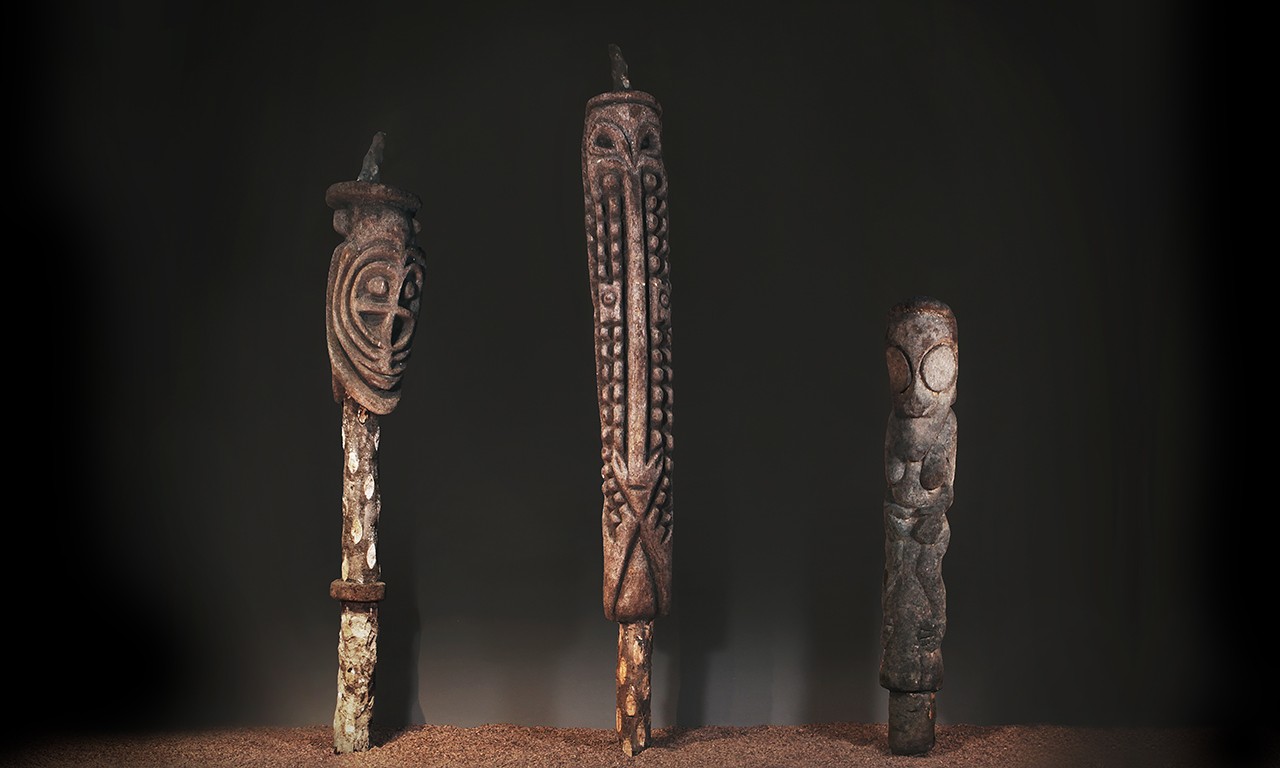 |
Grade Statues, 20th Century
Banks Islands, Torba Province (two on the left) and Ambrym Island, Malampa Province, Vanuatu, Melanesia
Tree fern root
L.2015.22.1-.3
Loan courtesy of Gayle and Edward P. Roski |
Large and Mana Charged
A stroll around Port Vila, the capital city of Vanuatu, reveals the pervasiveness of monumental sculpture on the islands. Now more than ever, the commanding figures of Vanuatu standing slit gongs have become icons for the Melanesian nation, and they can be found adorning the lawns of hotels and homes alike. Journeying to remote villages on Ambrym Island or in the Banks Islands, alongside slit gongs one might find large grade figures carved from tree roots—symbols of prestige, wealth, and markers of one’s level of initiation. This post looks at and compares how both wooden object types fit into traditional Vanuatu societies.
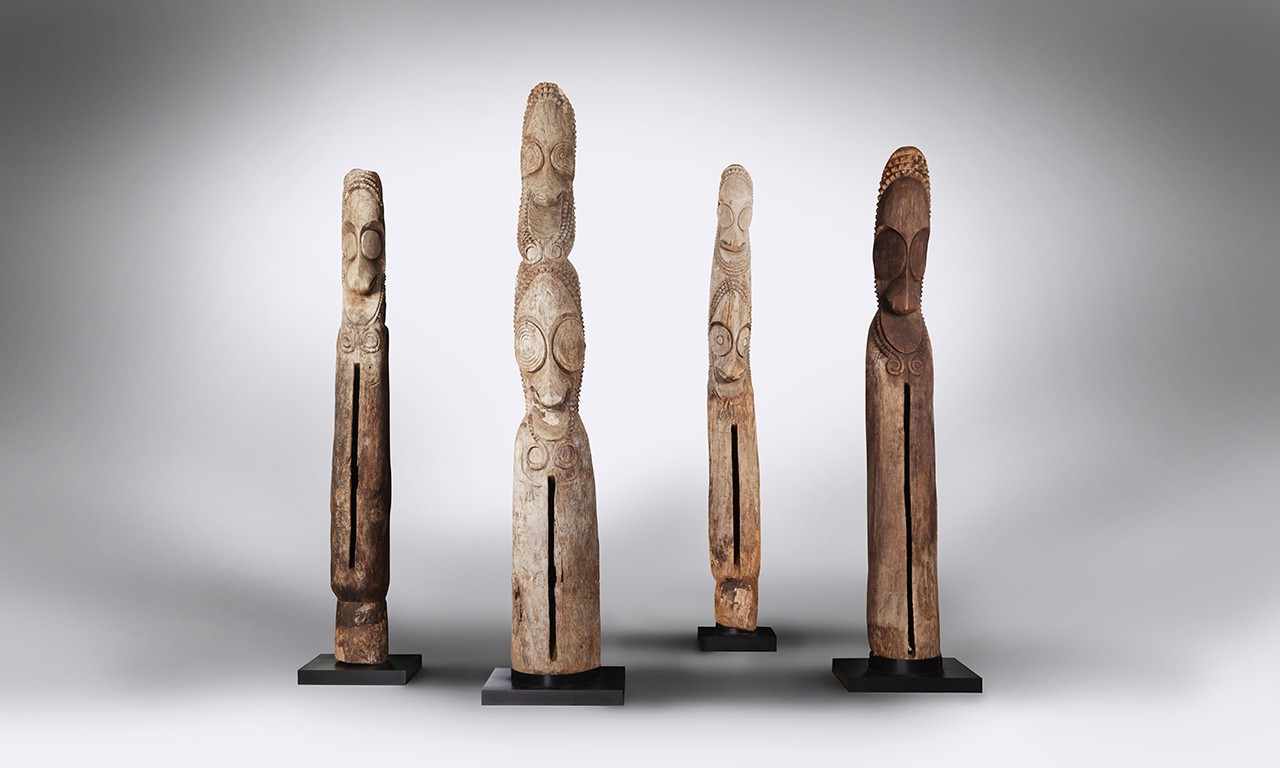 |
Slit Gongs (Atingting Kon), 19th to 20th Century
Ambrym Island, Malampa Province, Vanuatu, Melanesia
Wood
L.2012.3.1-.4
Collected on behalf of the Bowers Museum by the 2010 Roski-Keller-Martin Expedition |
Mouth of the Ancestor
Slit gongs (also called slit drums or standing drums) are made on several of Vanuatu’s islands with those from Ambrym Island, known as etingting in the local Bislama language, considered to be the highest quality. The process of making the drum is ritually important as it is during this period that the maker must imbue the instrument with spiritual power. Special measures are taken throughout the creation process to ensure this such as much of the carving being done in secret—especially that of the abstracted human head finials. As is seen in the Bowers’ installation of standing drums, some drums can be carved with more than one face. Currently, men are prohibited from carving more than five faces on one standing drum. Such drums are quite rare as a man must pay extra in order to create each additional face. Large trees from the breadfruit family that were already significant to a village were often used for the drums. When the carving is finished, a hole about two feet deep is dug and the slit drum is sunk vertically or at a slight angle such that their slit is roughly perpendicular to the ground. The drums stand between nine and eighteen feet in height.
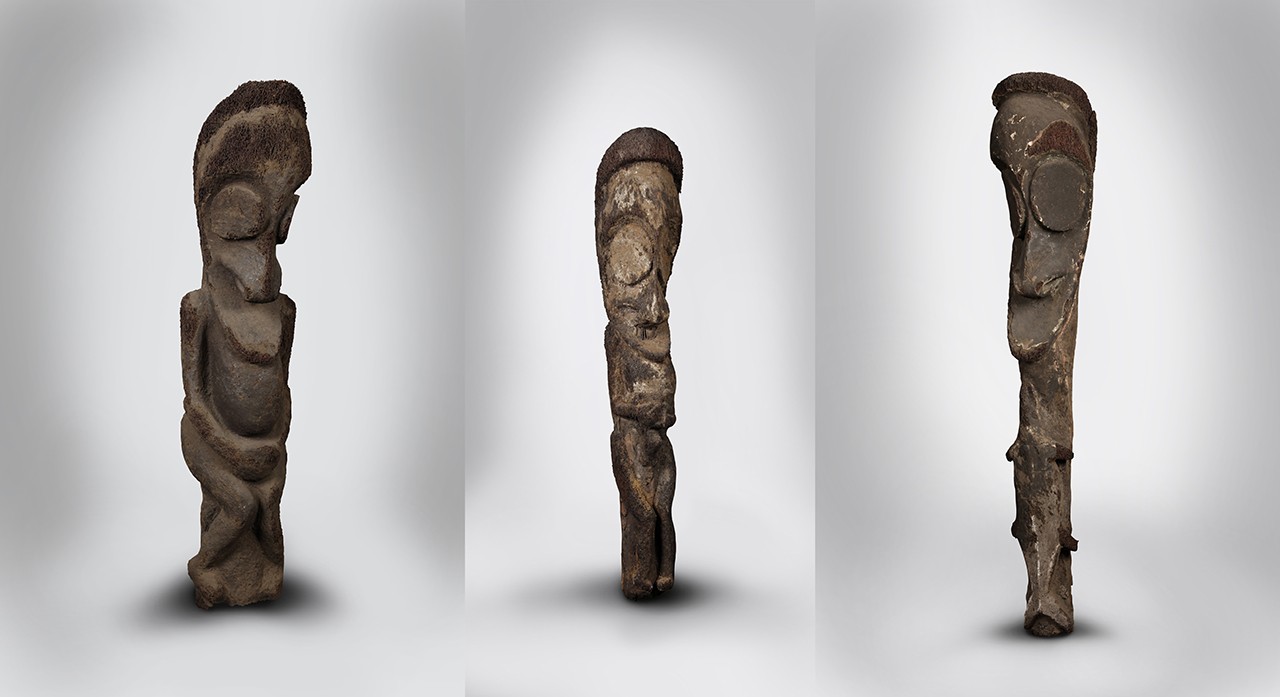 |
Grade Statues, 20th Century
Ambrym Island, Vanuatu, Melanesia
Tree fern, root, ochre, and pigments
81.100.1-.3
Gift of Mr. and Mrs. Harry A. Franklin and Loan courtesy of Gayle and Edward P. Roski |
Root of it All
Grade figures from Vanuatu come from several areas with the examples at the Bowers Museum hailing from Ambrym Island and the Banks Islands. Like slit drums, these figures can vary a great deal in height. The Bowers examples range from six to almost thirteen feet. They are carved from a tree fern which is surrounded by an easily workable, dense system of aerial roots and are then covered with ochre and white paint to help protect their form and color them. An immediately recognizable characteristic of these figures is that the heads of Ambrym Island figures bear a striking resemblance to the heads of slit drums from the same region of Vanuatu. The heads of these figures from the Banks Islands tend to be far more abstracted with geometric shapes.
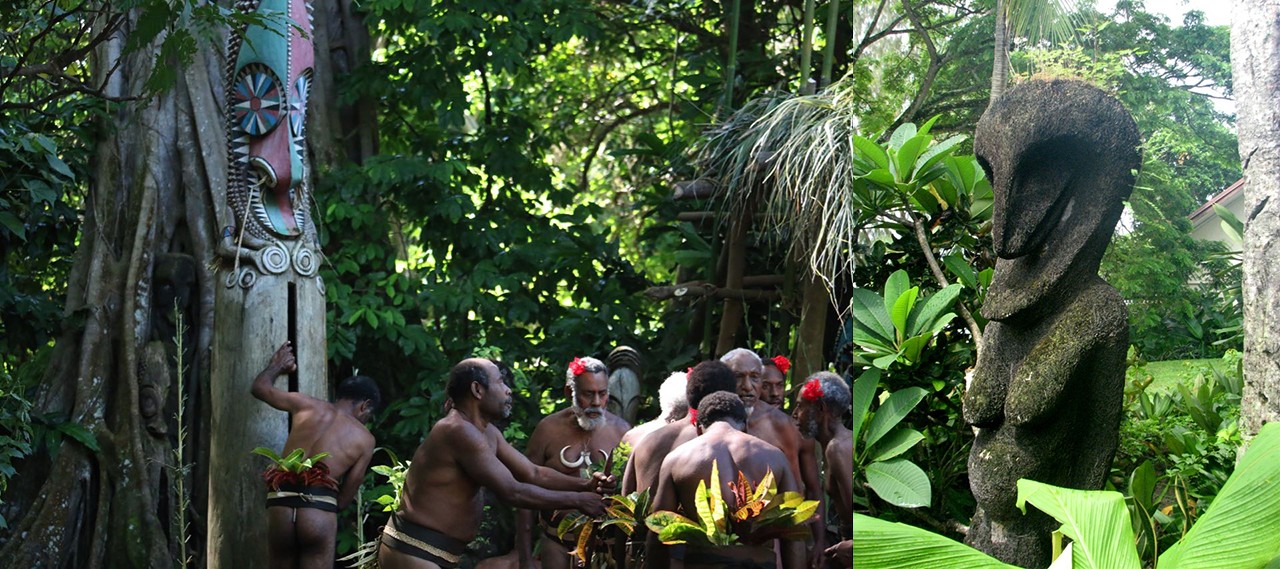 |
| Photograph by Kustom Kulture Australia, 2011 |
Photography by Lesley Godfrey, 2017 |
Neither Wind Nor Rain
Both types of monumental carvings were traditionally made to honor ancestors and played an important part in ceremonies. Drums could be used to send messages such as announcing a death, impending war, circumcision, meeting, ceremony, or dance. Their sound carries for miles, though just how far is dependent upon weather and wind conditions. Slit drums were often played in conjunction with celebrations marking an individual's elevation to a new rank or status. To rise to the highest grades, sacrifices of domesticated boars were made which required considerable financial wealth. Such rank, however, endowed a man with personal prestige and magical powers. Each ritual for the acquisition of a grade is completed by the erection of some kind of monument. There are various types ranging from a raised flat stone surrounded by ornamental plants to a carving on an upright stone, or for those who have won high places, one or more of the tree fern grade figures featured here.
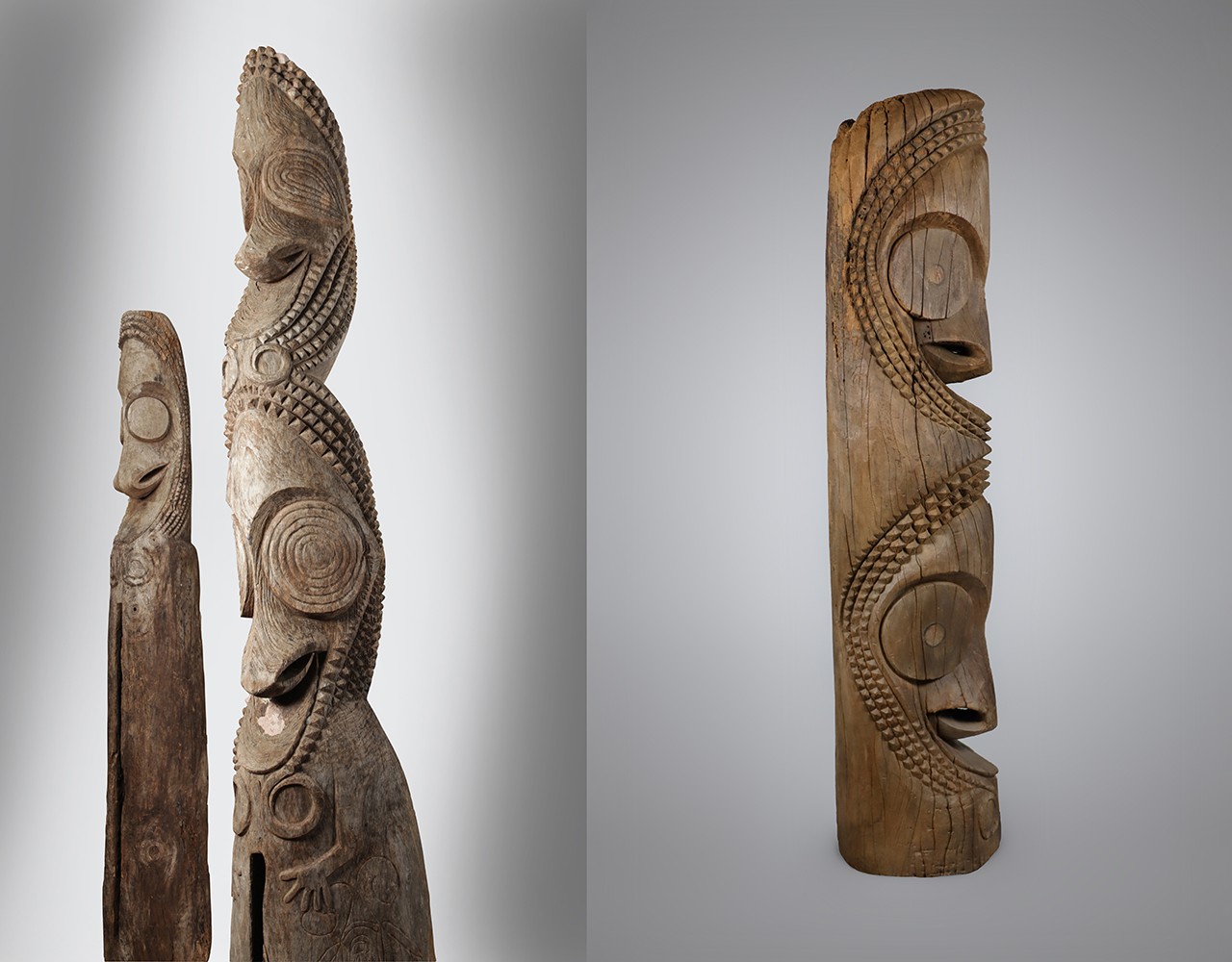 |
Slit Gongs (Atingting Kon), 19th to 20th Century
Ambrym Island, Malampa Province, Vanuatu, Melanesia
Wood
L.2012.3.1-.2
Collected on behalf of the Bowers Museum by the 2010 Roski-Keller-Martin Expedition |
Slit Gong Finial (Atingting Kon), 19th to 20th Century
Ambrym Island, Malampa Province, Vanuatu, Melanesia
Wood
L.2022.4.10
Anonymous Loan
|
As Used Today
While these pieces were and continue to be created for traditional use, they are also popular items for collectors, especially slit drums. The demand and appreciation for drums has prompted some wood carvers to modify traditional designs to fit the demands of buyers. The drums are still most frequently made in the western and northern portions of Ambrym. The north is the area where the drums are most frequently used for traditional purposes. While they can be found in other portions of the island, it is probable that they are used in these areas as sculptural decoration rather than as sacred objects.
Text and images may be under copyright. Please contact Collection Department for permission to use. References are available on request. Information subject to change upon further research.






Comments